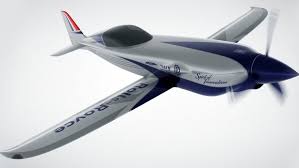
Breaking News
 Mike Rowe appears to be receiving flak for daring to explore the potential dangers of vaccines...
Mike Rowe appears to be receiving flak for daring to explore the potential dangers of vaccines...
 How to Keep Potatoes Fresh for a Year!
How to Keep Potatoes Fresh for a Year!
 A high school student has amazed the global science community with a discovery...
A high school student has amazed the global science community with a discovery...
Top Tech News
 The 6 Best LLM Tools To Run Models Locally
The 6 Best LLM Tools To Run Models Locally
 Testing My First Sodium-Ion Solar Battery
Testing My First Sodium-Ion Solar Battery
 A man once paralyzed from the waist down now stands on his own, not with machines or wires,...
A man once paralyzed from the waist down now stands on his own, not with machines or wires,...
 Review: Thumb-sized thermal camera turns your phone into a smart tool
Review: Thumb-sized thermal camera turns your phone into a smart tool
 Army To Bring Nuclear Microreactors To Its Bases By 2028
Army To Bring Nuclear Microreactors To Its Bases By 2028
 Nissan Says It's On Track For Solid-State Batteries That Double EV Range By 2028
Nissan Says It's On Track For Solid-State Batteries That Double EV Range By 2028
 Carbon based computers that run on iron
Carbon based computers that run on iron
 Russia flies strategic cruise missile propelled by a nuclear engine
Russia flies strategic cruise missile propelled by a nuclear engine
 100% Free AC & Heat from SOLAR! Airspool Mini Split AC from Santan Solar | Unboxing & Install
100% Free AC & Heat from SOLAR! Airspool Mini Split AC from Santan Solar | Unboxing & Install
 Engineers Discovered the Spectacular Secret to Making 17x Stronger Cement
Engineers Discovered the Spectacular Secret to Making 17x Stronger Cement
Rolls-Royce looks to smash speed record with the world's fastest electric airplane

Scheduled to fly in 2020, the zero-emission electric speedster is being developed as part of the Accelerating the Electrification of Flight (ACCEL) and is billed as a leader of the "third wave" of aviation.
Gloucestershire airport outside of Cheltenham, England may seem like just another provincial airfield, but it's the base for an attempt by engineers, designers, and data specialists from Roll-Royce, electric motor and controller manufacturer YASA and the aviation start-up Electroflight to create a single-seater prop-plane that will take electric aircraft to a whole new level.
Partly funded by the British government, ACCEL draws on Formula Eexpertise in an effort to build an electric aircraft that tops out at over 300 mph to set a new e-plane record, and potentially one day even exceed the 1931 Schneider Trophy record set by a Supermarine S.6B that used a Rolls-Royce "R" engine to reach 343 mph (552 km/h) in 1931.

 Wall Street wants to go 24/7
Wall Street wants to go 24/7

